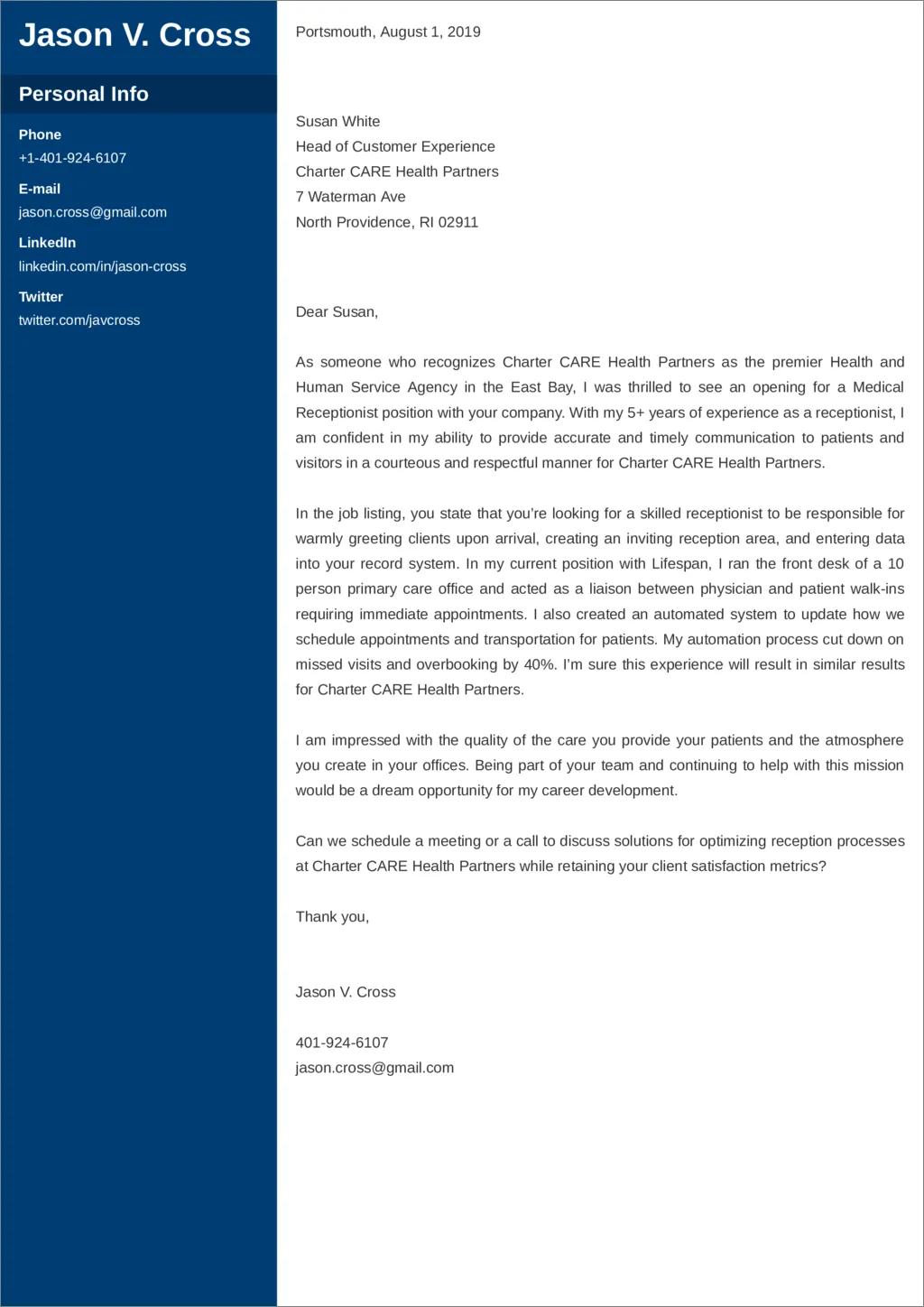Crafting a Receptionist Cover Letter
A receptionist cover letter is your first opportunity to make a positive impression on a potential employer. It is more than just a formality; it’s your chance to showcase why you are the ideal candidate for the role. A well-crafted cover letter complements your resume, providing context to your skills and experience. It should highlight your key strengths, demonstrate your enthusiasm for the position, and persuade the hiring manager to invite you for an interview. Remember that this document represents you and how you write, and it is very important to be precise and well-written.
Highlighting Relevant Skills
Receptionist roles demand a diverse skill set. Your cover letter should emphasize the skills most relevant to the specific job description. Review the job posting carefully and identify the key skills the employer is seeking. Then, provide concrete examples of how you’ve demonstrated those skills in previous roles. This approach will make your application more appealing to hiring managers. This section gives you a great opportunity to sell your skills and what makes you special. Be sure to highlight the skills that are most required in the job.
Communication Skills
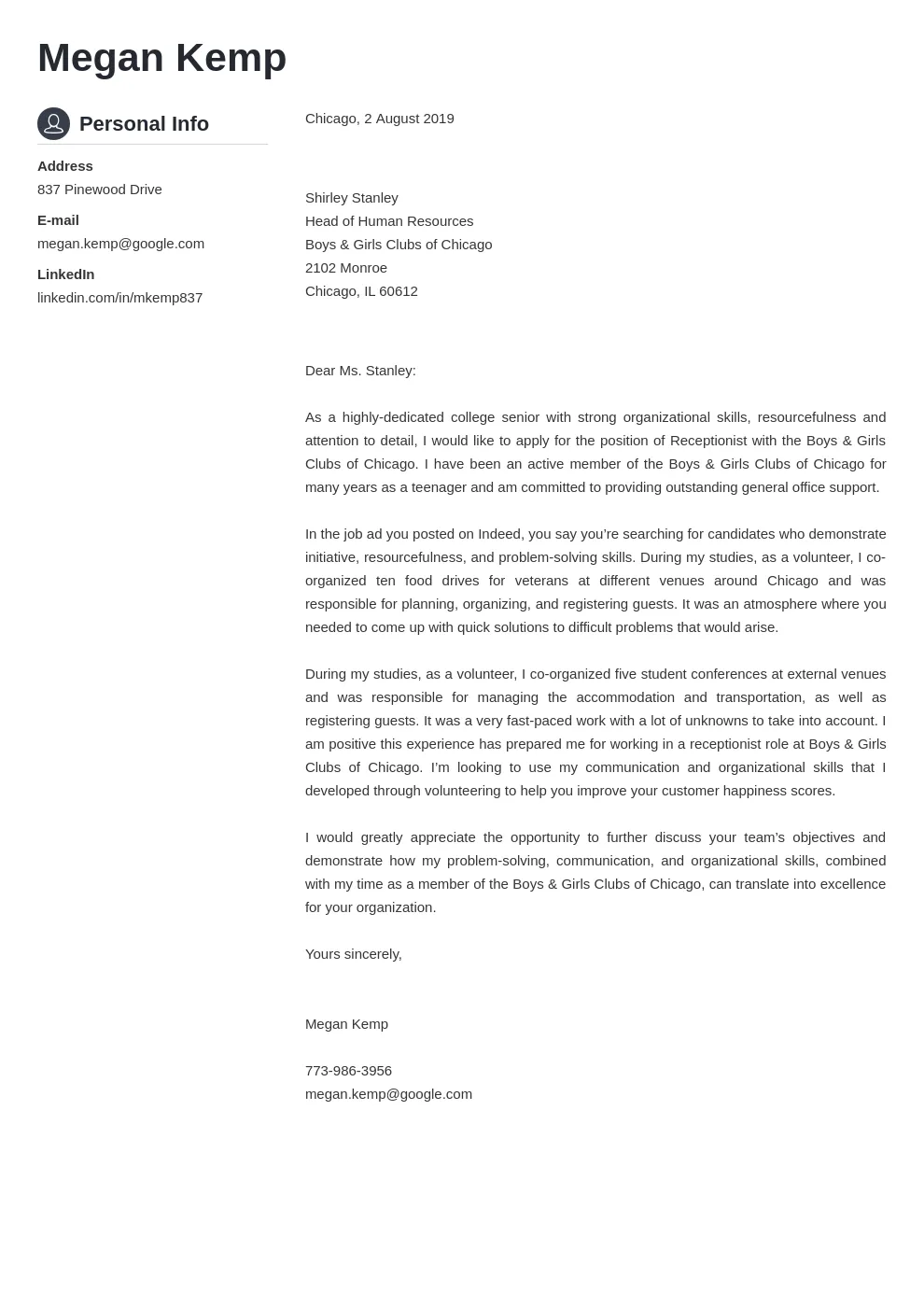
Receptionists are the first point of contact for many organizations, so excellent communication skills are crucial. In your cover letter, mention your ability to communicate clearly and professionally, both verbally and in writing. Give examples of how you’ve handled phone calls, emails, and in-person interactions. Highlight your ability to actively listen, understand needs, and convey information effectively. Emphasize your ability to use good verbal and written skills to get the job done efficiently. This section should prove your ability to interact with people and resolve any issues that may arise.
Organizational Skills
Receptionists often manage multiple tasks simultaneously. Showcase your organizational skills by mentioning your experience with scheduling, managing appointments, and maintaining records. Provide specific examples of how you’ve organized information, prioritized tasks, and kept things running smoothly. Highlight your attention to detail, your ability to multitask, and your ability to meet deadlines. Make sure to include any processes you created to make your job easier. This will show you think outside the box.
Technical Proficiency
Many receptionist positions require proficiency in specific software and technologies. In your cover letter, specify the software and systems you’re familiar with, such as Microsoft Office Suite, customer relationship management (CRM) systems, or phone systems. Mention your ability to learn new technologies quickly and adapt to changing requirements. Highlight any technical skills that are listed in the job description. Show how you can make technology work in your favor to benefit your company and make your job easier and more efficient. Never underestimate the power of technical skills in the modern world.
Showcasing Experience
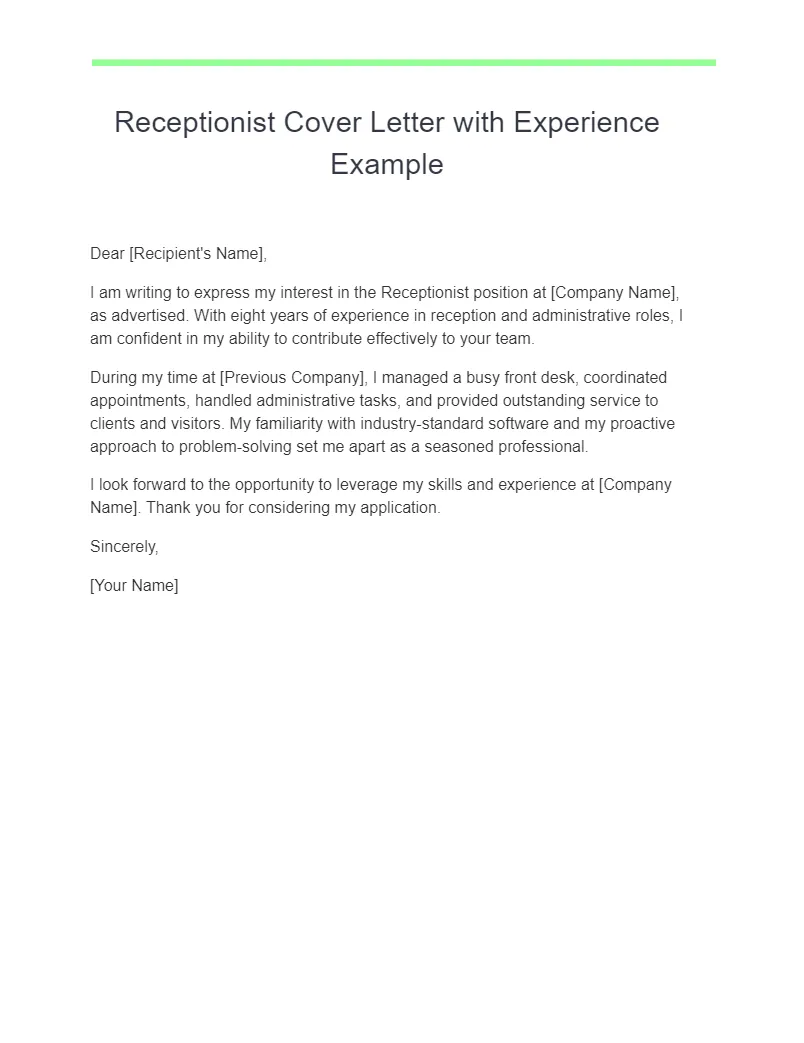
Your cover letter should provide a brief overview of your relevant work experience. Focus on experiences that align with the requirements of the receptionist role. Highlight your accomplishments and responsibilities in previous positions, quantifying your achievements whenever possible. Tailor your descriptions to match the job description, emphasizing the experience that best demonstrates your suitability for the position. Make sure your most relevant experience gets the most time and detail in the letter.
Structuring Your Cover Letter
A well-structured cover letter is easy to read and conveys your message effectively. Your letter should include an introduction, a body, and a conclusion. The introduction should state the position you’re applying for and how you learned about the opportunity. The body should highlight your skills and experience, providing specific examples to support your claims. The conclusion should reiterate your interest in the position and thank the hiring manager for their time and consideration. Keep your letter concise and focused, generally within one page.
Opening and Closing Statements
Your opening and closing statements set the tone for your cover letter. In the opening, state the position you’re applying for and where you found the job posting. Briefly introduce yourself and express your enthusiasm for the opportunity. In the closing, reiterate your interest in the position and express your gratitude for the hiring manager’s time and consideration. Include a call to action, such as inviting the hiring manager to contact you for an interview. Be sure to also include contact information such as phone and email.
Tailoring Your Letter to the Job
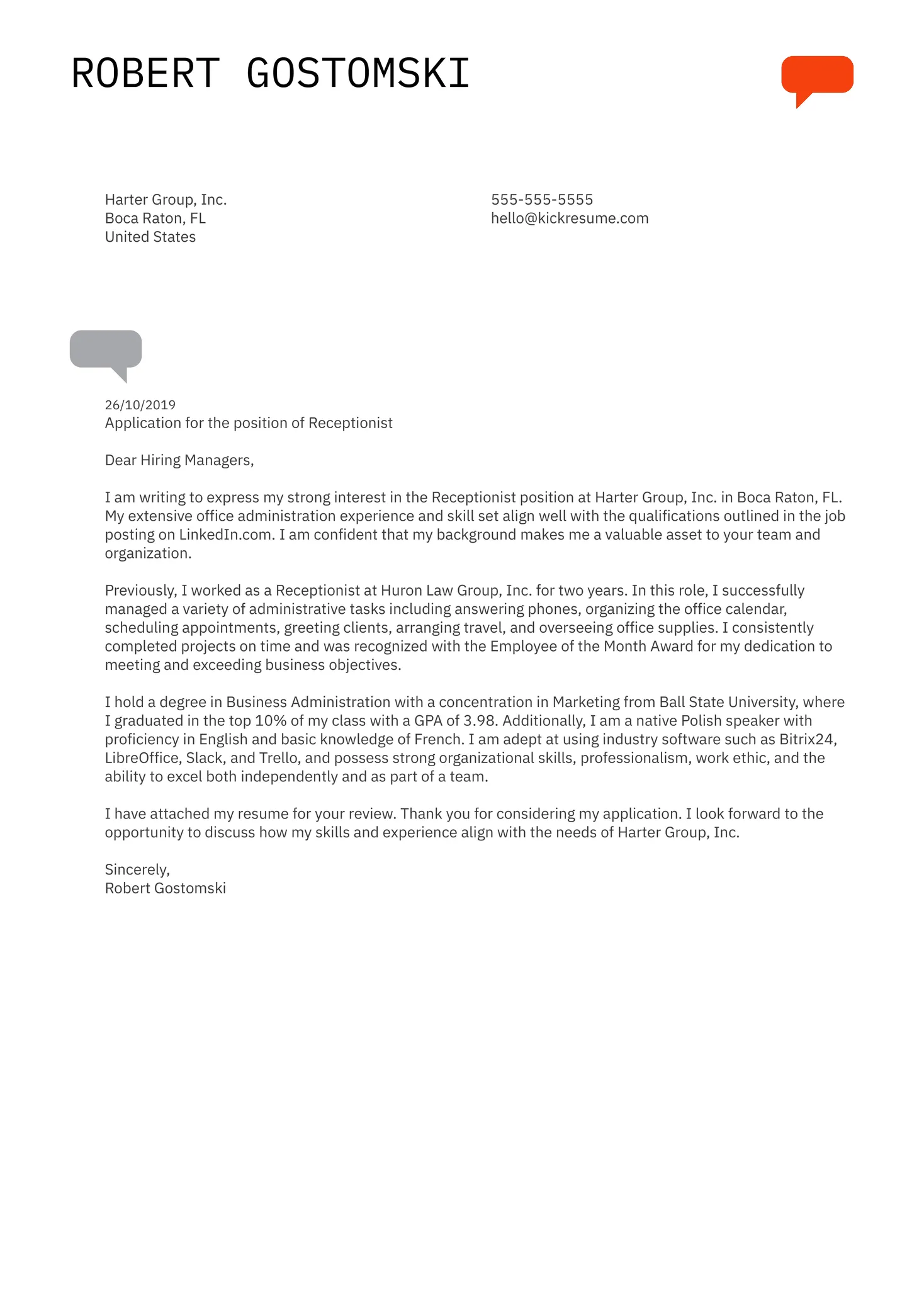
A generic cover letter rarely impresses hiring managers. Tailor your cover letter to each job application, highlighting the skills and experience that are most relevant to the specific position. Carefully review the job description and identify the key requirements. Use keywords from the job description throughout your letter. Show that you understand the company’s needs and that you’re the right fit for the role. Your letter should reflect the job description as much as possible to increase your chances of being chosen.
Keywords and Phrases
Use keywords and phrases from the job description to help your cover letter get noticed. Keywords are specific words or phrases that employers use to describe the skills and experience they’re seeking. Incorporating these keywords throughout your cover letter will increase your chances of passing through applicant tracking systems (ATS) and catching the attention of hiring managers. Make sure you don’t overdo it; the letter should sound natural and be easy to read. The more the letter represents the job, the more likely you are to be selected.
Formatting and Proofreading
Formatting and proofreading are essential to creating a professional cover letter. Ensure your letter is visually appealing, easy to read, and free of errors. Use a clear and concise font, and maintain consistent formatting throughout the document. Proofread your letter carefully for any grammatical errors, typos, or inconsistencies. A well-formatted and error-free cover letter demonstrates your attention to detail and professionalism. Always read your letter multiple times before sending.
Formatting Your Letter
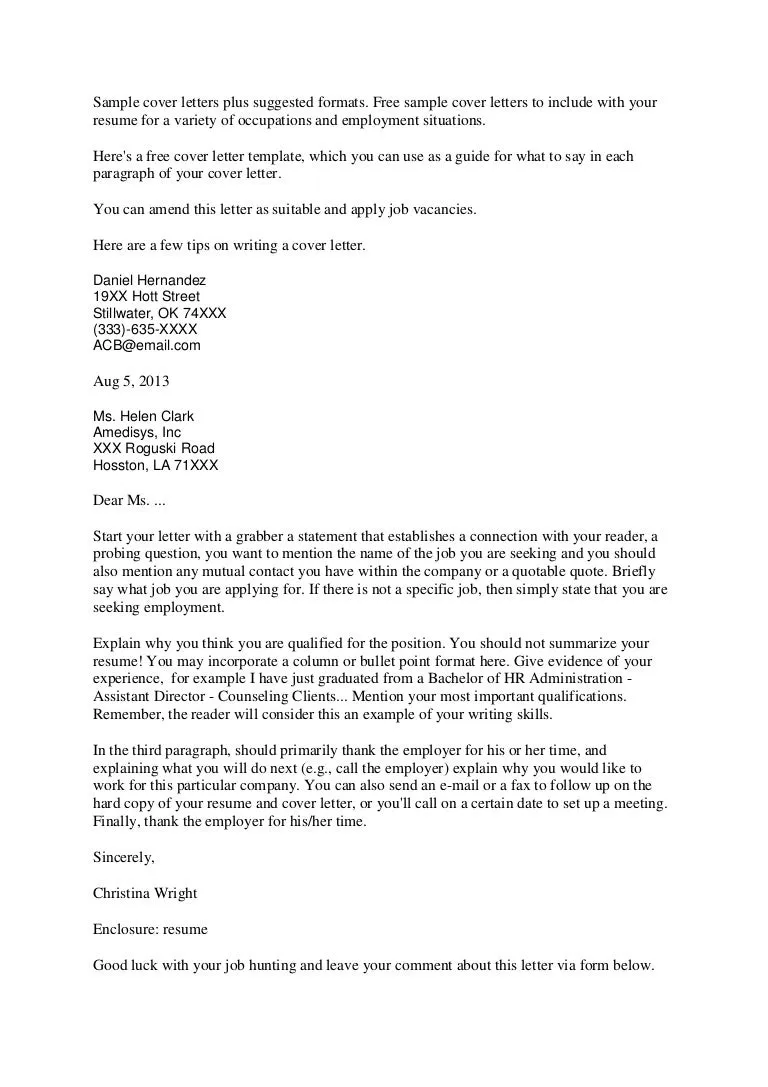
The format of your cover letter should be professional and easy to read. Use a standard font such as Arial or Times New Roman, and keep the font size between 11 and 12 points. Use single-spaced lines and add a space between each paragraph. Include your contact information at the top of the letter, followed by the date and the hiring manager’s contact information. Use clear headings and subheadings to organize the information. This will allow hiring managers to navigate the information quickly. Remember that consistency is key.
Proofreading for Errors
Proofreading is a critical step in the cover letter writing process. Carefully review your letter for any grammatical errors, spelling mistakes, and typos. Check for inconsistencies in formatting and language. Read your letter aloud to catch any awkward phrasing or unclear sentences. Have someone else proofread your letter to get a fresh perspective and catch any errors you may have missed. A well-proofread cover letter shows that you pay attention to detail, which is essential for a receptionist role.
Examples and Templates
Reviewing examples and templates can help you create an impressive receptionist cover letter. Search online for sample cover letters for receptionist positions. Analyze the structure, language, and content of these examples. Use these templates as a guide to help you tailor your own letter. Remember to customize the template to reflect your specific skills, experience, and the requirements of the job you’re applying for. Tailor the templates as much as possible to the job description for a better chance of selection. This will make your letter stand out.
Sample Cover Letter Section
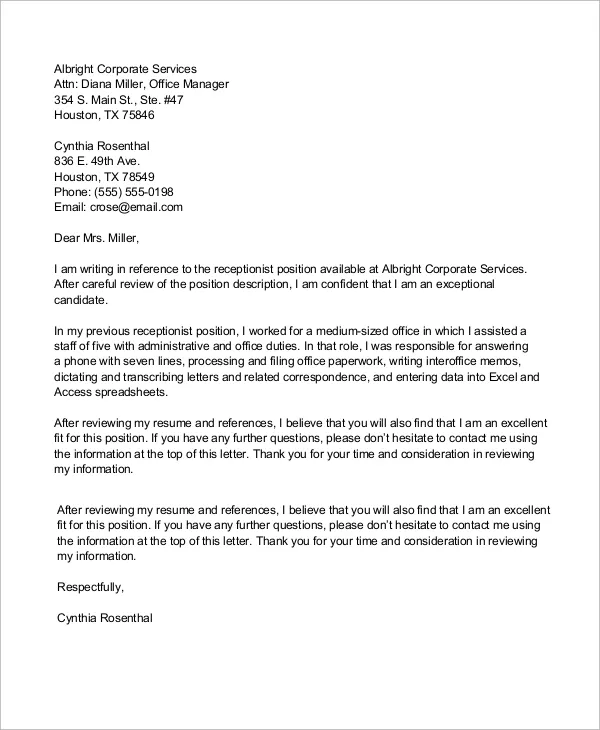
Here’s a sample section you can adapt for your cover letter.
Dear [Hiring Manager Name],
I am writing to express my interest in the Receptionist position at [Company Name], as advertised on [Platform]. With my strong communication and organizational skills, coupled with my experience in [Relevant Experience], I am confident I can make a significant contribution to your team.
During my time at [Previous Company], I was responsible for [Key Responsibilities]. I have a proven track record of providing excellent customer service, managing multiple phone lines, and maintaining a professional and welcoming environment. I have a good understanding of the demands of the job and the best way to get it done efficiently.
I am proficient in Microsoft Office Suite and possess excellent interpersonal skills. I am eager to learn new skills and contribute to a positive workplace. Thank you for your time and consideration. I look forward to the opportunity to discuss my qualifications further.
Sincerely, [Your Name]
Adaptation for Different Roles
Receptionist roles vary depending on the industry and the size of the company. Tailor your cover letter to each role by highlighting the skills and experience that are most relevant. For example, if applying for a role in a medical office, emphasize your experience with patient scheduling, insurance verification, and medical terminology. If applying for a role in a corporate environment, highlight your experience with managing calendars, coordinating meetings, and handling confidential information. Be sure to review the job description carefully and address each requirement.
